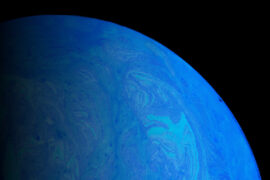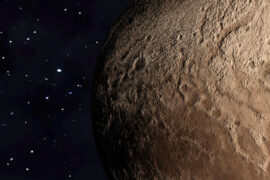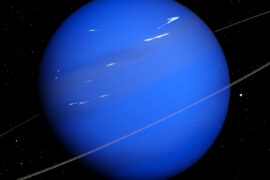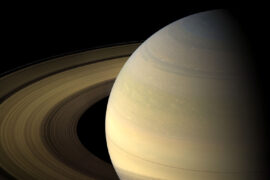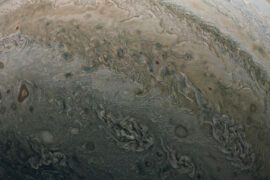Mars is the planet that we have studied the most besides Earth. Not just because it is relatively close to us, but because it shares some similarities with our own planet, and learning more about it can help us gain a better understanding of Earth.
Thanks to this, scientists have found many interesting facts about the red planet. In this article, we’ll take a look at 10 unique features of Mars that will surprise you and help you learn more about this planet that might someday be the home of the first human colony on another planet.
Unique features of Mars
10. Mars is red because it is rusty
Have you ever wondered why Mars is the only red planet in the Solar system? Well, the reason is that the rocks on its surface have a high concentration of iron, unlike Earth’s surface rocks which are mostly silicate.
Just like any metal on Earth, these rocks oxidize as time passes when they are exposed to the atmosphere, creating rust that just like on Earth, has a very distinguishable reddish tone.
Since Mars has no continents, most of its surface is covered by this red material, giving the planet its peculiar color.
9. Mars is half the size of Earth
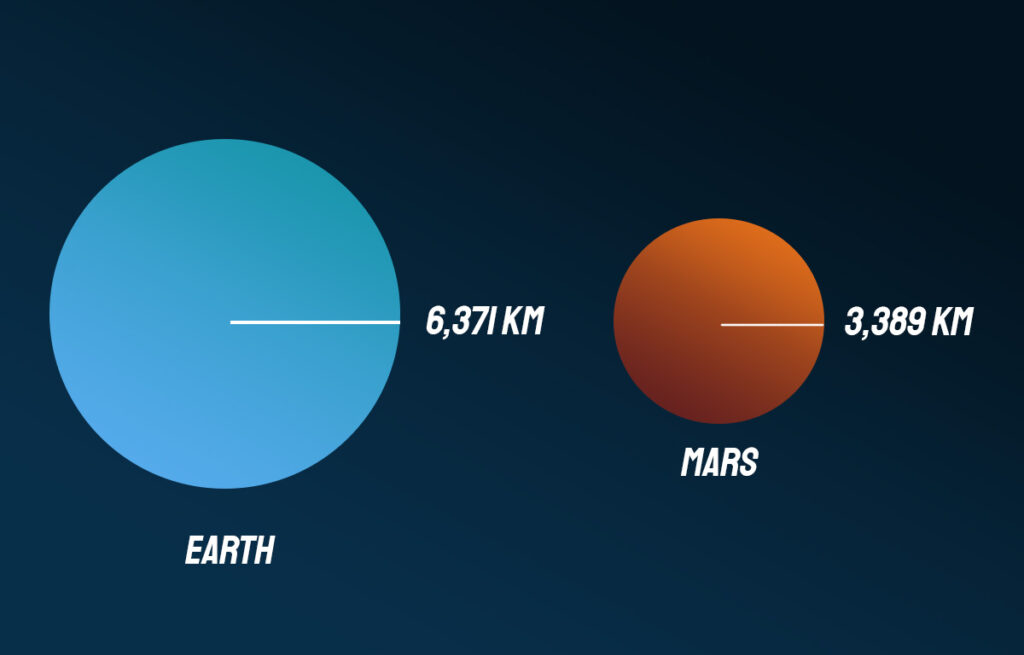
As a kid, when I learned that Mars was named after the Roman god of war I imagined for some reason that the red planet would be much bigger than Earth. But as it turns out, I was very wrong.
Mars is the second smallest planet in the Solar system with a diameter of just 6,778 kilometers (4,212 miles). Only Mercury is smaller. For comparison, that is approximately half of Earth’s diameter which is 12,742 km (7,917 miles).
As a result, the gravity on Mars is also smaller. A 70 kg person would only weigh 26.5 kg on Mars. You can find your weight on Mars with this calculator.
8. Mars has the biggest mountain in the Solar system
Despite its small size, Mars is home to some of the biggest landmarks in the Solar system. For example, it has the greatest canyon in the Solar system. It is called Valles Marineris, or Mariner Valley, and it extends for more than 4,000 kilometers (2,485 miles). For comparison, that is almost as long as the width of the continental United States. The Great Canyon, in Arizona, has a length of just 800 kilometers (497 miles).
An unlikely, but extremely fun theory, suggests that Valles Marineris could have been the result of a giant cosmic lightning bolt that hit the surface of Mars in the early days of the Solar system.
Mars also has the largest mountain in the Solar system. Olympus Mons or Mount Olympus is a giant volcano that is almost as wide as the whole country of France and has almost the same area as Poland.
Olympus Mons is named after the mythological Mount Olympus and a real mountain in Greece where ancient Greeks believed that the gods lived. For comparison, Olympus Mons is almost 2.5 times higher than Earth’s Mount Everest.
7. Mars had oceans at some point
In the year 2002, NASA’s Curiosity Mars rover sent several photographs of an area known as Gale Crater. These images showed a 3.5-billion-year-old shoreline with sedimentary accumulation that would be evidence of rising tides on the red planet.
That is just one of several pieces of a puzzle that scientists have been trying to solve for decades. Did Mars have oceans in the past?
The answer appears to be yes. It is very likely that at some point in its history, at least one-third of the Martian surface was covered in liquid water.
This discovery would mean a lot as it would increase the odds that Mars could have supported life at some point in its history.
6. There is currently a helicopter on Mars
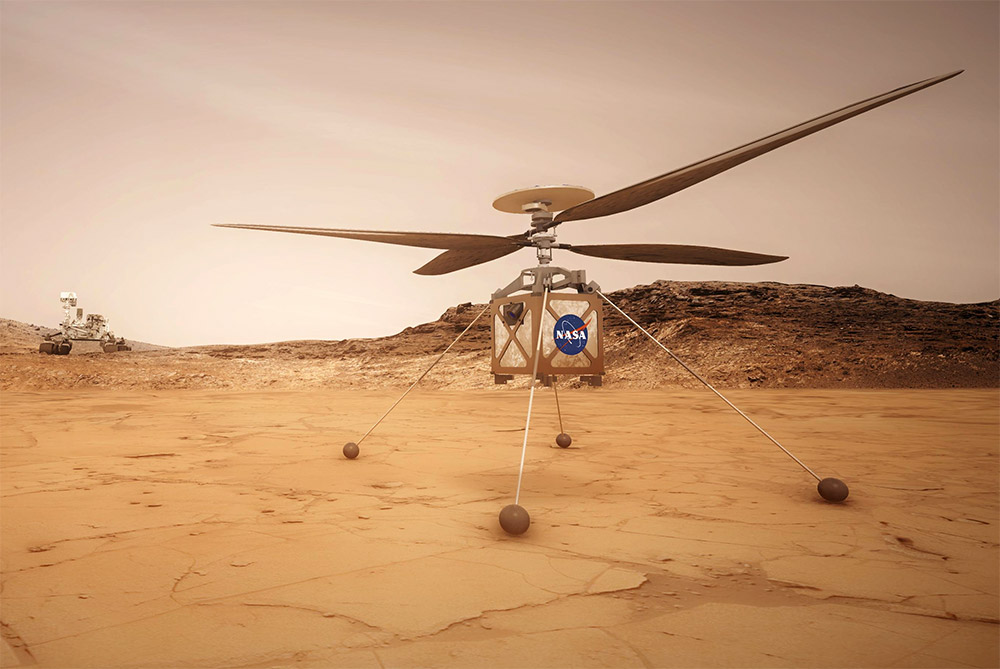
Mars is the planet that humans have sent the most rovers to. A total of eight of these robotic vehicles have explored the surface of the red planet and three of them are currently active.
The mission of these rovers has varied throughout the year, but they are built to compile data about the Martian soil and atmosphere, perform experiments, and look for signs of water and life.
The last rover to land on Mars in 2021, the Perseverance, was also equipped with a small helicopter drone called Ingenuity. The Ingenuity captured and sent back to Earth the first photos of Mars taken from the air. Its main function is to study the Martian terrain and find interesting areas for the Perseverance to study.
5. A Martian day is almost the same as a day on Earth
We learned above that Mars is about half the size of Earth. With that in mind, you could presume then that it would complete its rotation period faster than Earth, right?
Well, not really. Every planet rotates at a different speed which is not always determined by its size. Proof of this is the fact that Jupiter is actually the fastest-rotating planet despite being also the biggest.
Mars rotates slower than Earth. As a matter of fact, it rotates at almost exactly half the speed. That is coincidently very similar to the difference in size between both planets. As a result, a Martian day is almost the same length as a day on Earth. A day on Mars is approximately 24 hours and 30 minutes long.
On the other hand, a year on Mars is almost twice as long as an Earth year. It takes Mars 687 days to complete an orbit around the Sun due to being farther away from the Sun and traveling through space slightly slower than our planet.
4. There are Earthquakes on Mars
One of the many similarities between Earth and Mars is that the red planet also has tectonic plates. And not just that, but Mars is geologically active despite appearing to be dead otherwise.
While Mars volcanoes are not currently active on the surface, there is still movement of lava, igneous rocks, and minerals underneath the surface. As a result, Mars occasionally also suffers earthquakes, or more accurately, Marsquakes.
The discovery of Marsquakes has added strength to the theory of Mars being a lot more active in the past.
3. The Martian moons were probably asteroids at some point
Moons can be formed in one of two ways. Some, like our Moon, can form after the planet is impacted by a large object and a bunch of material is sent flying into its orbit. This material sometimes clumps together to form a natural satellite or a “moon as they are commonly known”.
Mars has two moons called Phobos and Deimos after the Roman gods of fear and terror. But these two small objects formed in a different way. Phobos and Deimos were (most likely) asteroids on the asteroid belt at some point.
They were probably ejected after colliding with another asteroid and ended up traveling in the direction of Mars where the gravity of the planet captured them into its orbit, turning them into moons.
This is quite common in the Solar system and is one of the reasons why Jupiter and Saturn have so many moons.
2. Mars is very cold

When you look at its color and its desertic appearance, your brain might trick you into thinking that Mars has the same weather conditions as a desert on Earth. But that’s not the case at all. Mars is significantly colder than Earth.
The average temperature in the Martian surface is −62°C (−80°F). That is comparable to the average temperatures experienced in the interior areas of Antarctica. The average temperature on Earth’s surface is 14°C (57°F).
1. Mars will be the first planet that humans will walk on (other than Earth)
At the time of writing, multiple private and public organizations are racing to become the first to send a person to Mars. While there is still no defined timeline for these missions, with the current rate of progress, it is very likely that we will see the first person walking on Mars within the next two decades.
Mars will definitely be the first planet (other than our own) that humans will visit and colonize. It is the best target for this achievement because of several reasons include being relatively close to Earth and having the least aggressive environment out of all the other terrestrial planets.
When do you think this will happen? Leave a comment with your prediction and maybe in a few years you’ll be able to come back and see if you were right.


